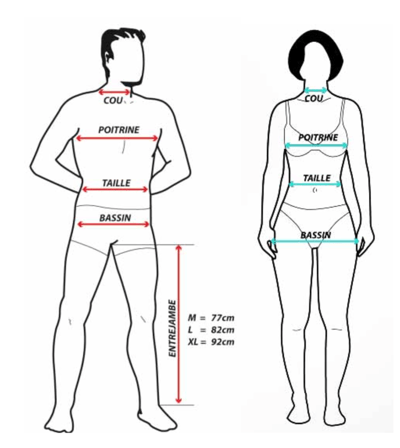The Brief - Pas seulement des bijoux - c'est une expression de la culture et du patrimoine africains authentiques (Yoruba). - L'image présentée est un artefact africain (Yoruba) emblématique des XVe et XVIe siècles - On pense qu'il ressemble à un Ooni (roi) de l'ancienne ville d'Ilé-Ifè - Ce pendentif fait une véritable déclaration, tout comme le porteur. - Ce pendentif met l'héritage yoruba et nigérian sous les feux de la rampe. Le pendentif de détail est coulé en bronze massif. Il célèbre les œuvres d'art inégalées des XVe et XVIe siècles du royaume d'Ilé-Ifè, au Nigeria, et de la culture yoruba. Le pendentif est unisexe et est livré avec une chaîne en bronze. Le pendentif mesure 4 cm (l) x 7,5 cm (h) et pèse 107 grammes. L'histoire Le pendentif est notre plus petite représentation moderne d'un moulage d'Ife du Royaume du Royaume d'Ilé-Ifè qui a été retrouvé enterré dans un complexe de la ville. Ilé-Ifè est une ancienne ville située dans l'État d'Osun, au Nigeria. C'est la plus grande ville yoruba du Nigeria et elle est considérée comme la patrie spirituelle et le lieu de naissance du peuple yoruba. Dans la tradition Yoruba, Ile Ife marque l'endroit où les divinités sont descendues sur la terre et ont planté les graines de la vie. Ilé-Ifè a commencé à se développer en tant que centre artistique vers 900 après JC. Ilé-Ifè est mondialement connue pour ses œuvres d'art naturalistes sophistiquées du XIIIe au XVe siècle. Il s'agit notamment d'objets en bronze, en pierre et en terre cuite. Les artistes ont également travaillé le cuivre, un matériau beaucoup plus difficile à travailler, mais ils ont déployé des méthodes ingénieuses pour produire des œuvres époustouflantes. Leo Frobenius, un ethnographe allemand qui a rencontré des têtes de bronze et de terre cuite lors d'une expédition de 1910 à Ilé-Ifè a été impressionné par l'esthétique, le talent artistique et la sophistication de ces œuvres. Malheureusement, son petit cerveau raciste chétif était incapable de comprendre qu'il s'agissait d'œuvres produites par des Yoruba locaux. La tête présentée est l'une des treize têtes de bronze grandeur nature trouvées enterrées à Ilé-Ifè, et on pense qu'elle ressemble à un Ooni, ou roi, d'Ilé-Ifè et datée entre le 14ème et le 15ème siècle. Ils ont été découverts lors de travaux de construction de maisons dans un complexe de Wunmonije (un ancien Ooni d'Ife). On pense que les têtes ont été créées à l'image des personnes qui vivaient à l'époque de l'Ooni (roi) Obalufon II. Pour plus d'informations, voir : https://artsandculture.google.com/story/12-facts-you-need-to-know-about-ife-art-yemisi-shyllon-museum-of-art/TQWB2S-ClCrcNw?hl =fr https://www.theguardian.com/artanddesign/2010/feb/26/kingdom-of-ife-british-museum-review https://face2faceafrica.com/article/the-history-of-ile-ife -l-ancien-royaume-yoruba-avec-les-sculptures-les-plus-frappantes-d-afrique
Couleur:
Or
Genre:
Pour Elle
Matière:
Bronze, Coton
The Brief
- Not just jewellery – this is an expression of authentic African (Yoruba) culture and heritage.
- The image featured is an iconic 15th – 16th century African (Yoruba) artefact
- The likeness is believed to be of an Ooni (king) of the ancient city of Ilé-Ifè
- This pendant makes a real statement as does the wearer.
- This pendent brings Yoruba & Nigerian heritage into the limelight
The Detail
Pendent is cast in solid bronze. It celebrates the un-matched 15th and 16th century artworks of the Kingdom of Ilé-Ifè, Nigeria, and Yoruba culture. The pendent is unisex, and is comes with a bronze chain. The pendent measures 4cm (w) x 7.5cm (h), and weighs 107grams.
The Story
The pendent is our modern smaller representation of an Ife casting from the Kingdom of Kingdom of Ilé-Ifè that was found buried in a compound in the city.
Ilé-Ifè is an ancient city located in Osun state, Nigeria. It is the largest Yoruba city in Nigeria, and is considered to be the spiritual homeland and birthplace of the Yoruba people. In Yoruba tradition, Ile Ife marks the place where the deities descended to the earth and planted the seeds of life.
Ilé-Ifè began to develop as a centre of artistry from around 900 AD. Ilé-Ifè is globally renowned for its sophisticated 13th to 15th century naturalistic artworks. These include bronze, stone, and terracotta artefacts. The artists also worked with copper which is a much more difficult material to work with – but they deployed ingenious methods to produce stunning works.
Leo Frobenius, a German ethnographer who encountered bronze and terracotta heads during a 1910 expedition to Ilé-Ifè was over-awed by these artwork’s aesthetics, artistry, and sophistication. Unfortunately – his tiny puny racist brain was unable to comprehend that these were works produced by local Yoruba people.
The head featured is one of thirteen near-life sized bronze heads found buried in Ilé-Ifè, and is believed to be the likeness of an Ooni, or king, of Ilé-Ifè and dated between the 14th and 15th century. They were discovered during a house-building works in a compound of Wunmonije (a previous Ooni of Ife). The heads are believed to be created in the likeness of people who lived in the era of the Ooni (king) Obalufon II.
For more information see:
https://artsandculture.google.com/story/12-facts-you-need-to-know-about-ife-art-yemisi-shyllon-museum-of-art/TQWB2S-ClCrcNw?hl=en
https://www.theguardian.com/artanddesign/2010/feb/26/kingdom-of-ife-british-museum-review
https://face2faceafrica.com/article/the-history-of-ile-ife-the-ancient-yoruba-kingdom-with-africas-most-striking-sculptures
 États-Unis
États-Unis















































Merci infiniment